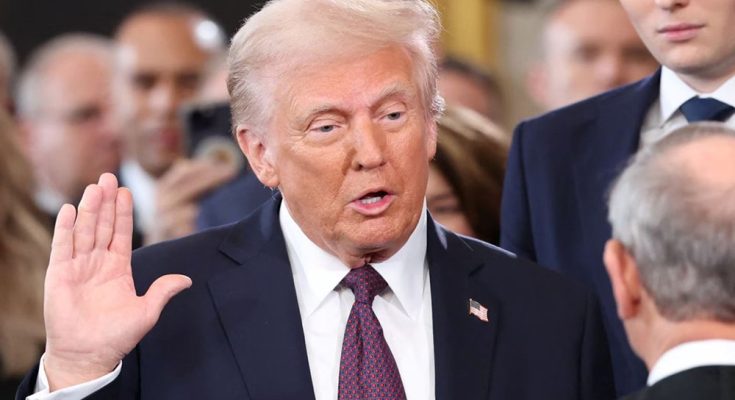Trump Signs Executive Order Requiring Proof Of Citizenship When Voting
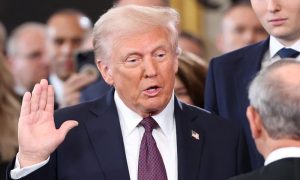
In a groundbreaking move, former President Donald Trump signed an executive order mandating proof of citizenship for individuals casting their votes in federal elections. This decision, aimed at ensuring election integrity, has sparked debates across political and legal landscapes. Proponents argue it strengthens democracy by preventing voter fraud, while critics claim it could suppress voter turnout. This article delves into the implications, reactions, and potential consequences of this executive order.
## Background and Context
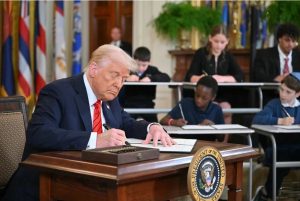
Election integrity has been a cornerstone of Trump’s political agenda since his initial campaign in 2016. Allegations of voter fraud and election irregularities have fueled legislative efforts to tighten voting regulations. The executive order signed by Trump builds upon these concerns, aiming to establish stricter voter identification protocols.
Previously, several states had implemented voter ID laws, but these often allowed multiple forms of identification, including non-citizen documents. The new executive order mandates that all voters provide valid proof of U.S. citizenship before casting their ballots in federal elections, setting a nationwide precedent.
## Key Provisions of the Executive Order
The executive order outlines several critical measures:
1. **Mandatory Proof of Citizenship:** All individuals voting in federal elections must present government-issued documentation proving U.S. citizenship, such as a birth certificate, passport, or naturalization certificate.
2. **State Compliance:** States must update their voter registration processes to align with federal requirements and remove non-citizens from their voter rolls.
3. **Penalties for Non-Compliance:** States failing to enforce the new regulations may face federal funding cuts for election administration.
4. **Database Coordination:** Government agencies will collaborate to maintain a comprehensive national voter database to prevent fraudulent registrations.
5. **Public Awareness Campaigns:** Federal and state governments will launch initiatives to educate citizens on the new requirements and ensure voter preparedness.
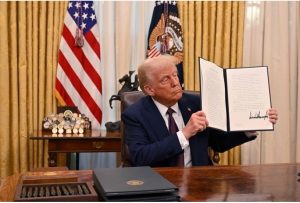
### Supporters’ Perspective
Proponents of the executive order argue that it safeguards election integrity by preventing non-citizens from voting. They cite instances of voter fraud, claiming that stricter measures are necessary to restore public trust in the electoral system.
Republican lawmakers and conservative advocacy groups have praised the decision, emphasizing the importance of secure elections. Many argue that similar policies exist in other democratic nations and that requiring proof of citizenship is a logical step toward ensuring fair elections.
### Critics’ Concerns
Opponents of the executive order argue that it disproportionately affects marginalized communities, including low-income citizens, minorities, and the elderly, who may have difficulty obtaining the required documents. Civil rights organizations contend that the measure could lead to voter suppression, discouraging eligible voters from participating in elections.
Democratic leaders and voting rights activists have condemned the executive order, calling it an attempt to disenfranchise voters. Legal challenges are expected, with lawsuits likely to be filed on the grounds of constitutional violations and voter discrimination.
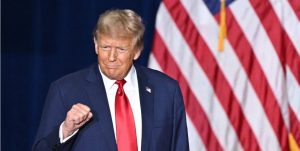
The executive order raises significant legal and constitutional questions. The Voting Rights Act of 1965 and the National Voter Registration Act provide protections against discriminatory voting practices. Critics argue that the new mandate could violate these laws by placing undue burdens on certain voter groups.
Moreover, election laws have traditionally been regulated at the state level. Opponents may challenge the federal government’s authority to impose such requirements, potentially leading to Supreme Court deliberations.
## Potential Impact on Future Elections
If upheld, the executive order could reshape the electoral landscape in the United States.
1. **Changes in Voter Turnout:** The new requirements could deter some eligible voters, particularly those lacking easy access to citizenship documents.
2. **Influence on Swing States:** In battleground states where elections are decided by narrow margins, the executive order could impact voter demographics and outcomes.
3. **Administrative Challenges:** States will need to overhaul their voter registration systems, potentially facing logistical and financial burdens.
4. **Long-Term Precedents:** Future administrations may either reinforce or overturn this policy, influencing the broader conversation on election security.
## Conclusion
Trump’s executive order requiring proof of citizenship when voting is a pivotal development in the ongoing debate over election integrity. While supporters view it as a necessary safeguard against fraud, critics warn of voter suppression and legal hurdles. As legal battles unfold, the policy’s fate remains uncertain, but its implications will undoubtedly shape the future of American democracy.
Voter participation and confidence in elections are fundamental to the democratic process. Whether this executive order strengthens or undermines those principles will be determined in the years to come. Regardless of political stance, ensuring accessible and secure elections remains a shared national priority.
